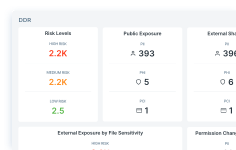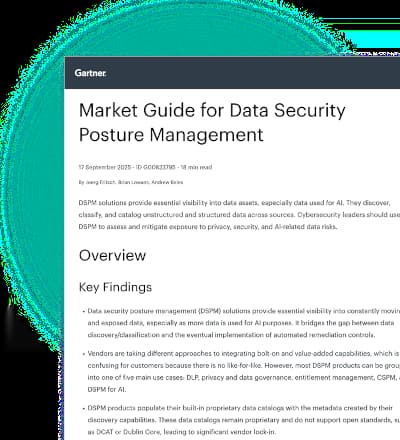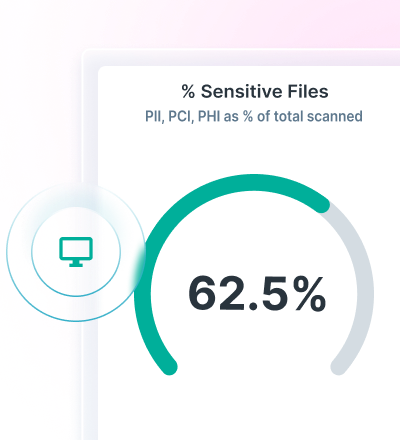What is Zero Trust Network Access (ZTNA)?
Zero Trust Network Access (ZTNA) is an IT security solution that enables remote employees to securely access resources on an enterprise network.

Zero Trust Network Access: A ZTNA Overview
For organizations experiencing a rapid shift to a hybrid workforce, ZTNA significantly improves over traditional network security technologies like Virtual Private Networks (VPNs).
While VPNs provide a secure connection between a user’s device and an IT network, VPNs allow users to access applications, data and other resources freely within an IT environment. As a result, VPNs can’t prevent attackers who have breached defenses from gaining access to high-value targets and sensitive data within the network.
VPNs create management headaches for IT teams since they typically must be installed on each user’s device. And since VPNs must backhaul traffic through a central hub, users inevitably experience latency and slow performance.
To protect distributed networks more successfully, many organizations are adopting solutions for Zero Trust Network Access. ZTNA relies on the critical principles of Zero Trust security to provide private network access: constant authentication, limited permissions, continuous monitoring and separation of network and application access.
The Principles of Zero Trust
ZTNA security is based on the core principles of a Zero Trust security framework:
- Never trust – always verify. Implicit trust is never granted in solutions for Zero Trust Network Access. ZTNA technologies require users to authenticate and continually validate their identities on every request before receiving access to applications and IT resources.
- Limit access. ZTNA solutions practice least-privilege access, granting permission for only the resources that a user, device or application requires to perform a task at a given time. This prevents attackers who have gained access to the network from accessing applications and data.
- Segment assets. In a Zero Trust environment, support on the network is divided into many smaller security perimeters, each protected by its own set of security policies. This allows security controls around remote access to be defined at the application level.
- Assume breach. Constant vigilance is vital to Zero Trust Network Access. ZTNA solutions enable security teams to constantly search for threats and breaches and mitigate them sooner to minimize damage.
Implementing a Zero Trust Framework
To apply Zero Trust principles to remote connections, organizations can adopt several technologies and practices for Zero Trust Network Access. A Zero Trust system framework incorporates:
- System Authentication. These may include multifactor authentication, network access control software, integration with existing Identity and Access Management (IAM) technologies products and identity providers (IdPs).
- Application Isolation. Isolating application access from network access. Users who gain access to the network do not have automatic permission to access applications on it.
- Use of a dark cloud. The Zero Trust framework creates a “dark cloud” that hides network and application infrastructure from users, preventing unauthorized users from seeing or attempting to discover assets to which they don’t have access.
- Microsegmentation technologies. Segmentation technologies ensure that once users are authorized, they have access only to specific applications rather than the whole network.
- Continuous monitoring. For security teams managing Zero Trust Network Access, ZTNA solutions must provide comprehensive visibility into user and device activity on the network. This allows security teams to identify misuse, anomalies and potential threats quickly.
- Device security. A ZTNA system considers devices’ risk and security posture as factors in the authentication.
The Benefits of Zero Trust Network Access: ZTNA vs. VPNs
Organizations and IT teams can achieve significant benefits when replacing VPNs with Zero Trust Network Access. ZTNA delivers:
- Stronger security. Limiting access to applications and IT resources is the crucial security benefit of Zero Trust Network Access. ZTNA technologies can successfully block attackers who have gained access to one part of the network from moving laterally within it. ZTNA encourages a more proactive approach to security, where IT teams can stay one step ahead of threats and breaches. Microsegmentation and least-privilege access dramatically reduce the attack surface to reduce the threat potential and the impact of successful breaches.
- Better user experiences. ZTNA offers much faster connections for users than VPNs since ZTNA provides direct links to applications rather than first routing traffic through a central hub for inspection.
- Easier management. ZTNA enables IT teams to manage and enforce security policies from a single console that delivers complete network visibility. Administrators can see who is accessing applications and resources and from where. Comprehensive visibility and easy-to-use management tools enable teams to demonstrate compliance, facilitate security audits and manage security policy with less effort.
- Support for SASE security. Combined ZTNA/SASE solutions improve security posture, support digital transformation and minimize the management burden for IT teams.
Forcepoint Zero Trust Network Access: ZTNA Simplified
Forcepoint has an all-in-one, cloud-native platform that makes it easy to adopt Zero Trust and secure remote connections to private web applications no matter where people work. Forcepoint ZTNA simplifies secure remote access management while delivering surprisingly fast speeds for users by pushing policy enforcement as close to the edge as possible.
Forcepoint ZTNA provides:
- Flexible deployment options. With Forcepoint ZTNA, organizations can deliver agentless access to private web apps on a browser or device. IT teams can also deploy an agent for access beyond HTTP/S, providing Zero Trust security for services such as SSH, RDP and others.
- Superior user experiences. Remote workers can connect to apps quickly and easily, as if in the office. Forcepoint eliminates complexity, bottlenecks, risk and lag associated with VPNs.
- Data loss protection. Forcepoint enterprise DLP provides consistent protection and real-time controls to ensure that sensitive information is not lost or leaked.
- Malware prevention. Forcepoint ZTNA provides access to malware-scanning engines running in the public cloud with no endpoint AV installations required.
- Fast deployment. A seamless process with minimal setup accelerates deployment and time to value. Forcepoint provides custom app support or tech support 24/7/365 to ensure successful implementation.
- SSE capabilities. Forcepoint ZTNA is part of Forcepoint ONE, a Security Service Edge (SSE) offering that also includes a Cloud Access Security Broker (CASB) and Secure Web Gateway (SWG).
- Effortless scalability. Forcepoint ZTNA automatically scales up or down with traffic needs and business requirements.
- Reliable performance. The Forcepoint ONE platform has achieved 99.99% uptime since 2015.










